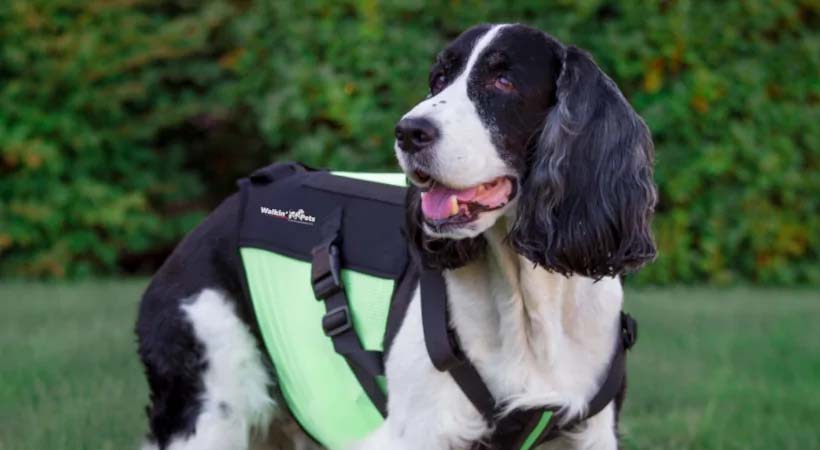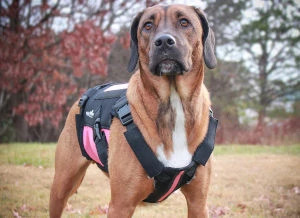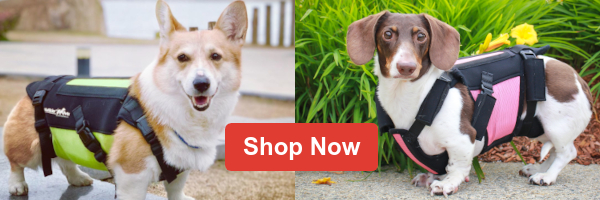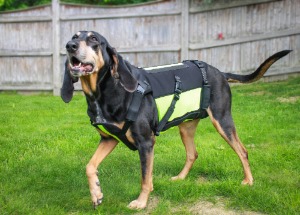- June 23, 2023
How to Choose the Right Dog Back Brace

How Does a Dog Back Brace Work?

If you’re looking to improve your pet’s back health, a back brace can provide the necessary support and stabilization for their spine. A back brace can effectively ease your dog’s back pain by reducing pressure on injured areas By reducing pressure on the injured areas, a back brace can effectively ease your dog’s back discomfort.
Proper back support can help to limit the movement of the spine, while also decreasing back pain and discomfort by stabilizing your dog’s spinal column. Back braces can be particularly helpful when worn during recovery and may also be worn as a preventive method before IVDD presents itself. Moreover, Back Braces offer your dog the ability to be more active and safely move, jump, and enjoy life.
How to Choose the Right Back Brace
1. Make Sure the Support is in the Right Spot
Always check where and how the dog’s spine is being supported. If the back brace has support only along the dog’s side, the dog’s range of motion will be limited. The back brace should have a support structure that conforms to the dog’s entire back to support the support structure that conforms to the dog’s entire back.
2. Support the Entire Spine
When choosing a back brace for your furry friend, be sure to select one that offers support to both the spine and surrounding epaxial muscles. The spinal support should support the spinal column and also offer support to your dog’s back muscles.
3. Consider Your Dog’s Breed
Every dog is shaped differently and dog’s with long bodies and short legs have an increased risk of developing spinal conditions, back pain, or other back problems. Both the Corgi and Dachshund are among the most common dog breeds that need back braces. So they need a brace that’s going to support their entire back and spine. The vertebraVe Back Support is designed with both dachshunds and corgis in mind! Featuring a slight extension in the rear, the vertebraVe is long enough to support all the way down the back to the lumbar. The small is sized to fit a dachshund perfectly, and the medium accommodates the corgi build.

How Long Should My Dog Wear a Back Brace?

Give your dog time to get used to wearing its new back support and introduce it to them gradually. At the beginning, have your dog wear its brace for short periods of time until it adjusts to the feeling of it’s new back support. Once your dog is comfortable wearing the brace, it can be worn for longer periods.
Most dogs need support when they are active and moving around. The brace can be removed when your dog is resting, although it doesn’t need to be. The vertebraVe features mesh side panels that will allow your dog’s skin to breathe.
What is most important is your dog’s comfort while wearing the brace. It should be snug but not too tight. The back brace should be tight enough to offer support but without retricting natural movement. Your dog should be able to move easily while wearing the back brace, they should be comfortable and able to move naturally while supported.
What Customers are saying about the vertebraVe back support
“I did A LOT of research on finding a harness/back brace for my dog who recently had surgery for a herniated disc, and this one won! It is a great harness; it is so well-made, and I love it. My dogs seems very comfortable in it.”
– Bailey Falco
“I think my senior dog is developing IVDD, and this is helping him be a lot more mobile. He even walks over to the harness and sniffs it when he wants to wear it inside the house. He is steadier on his back legs and also moving more confidently and wagging his tail again!”
– @thatrockgur
“It has helped my foster so much with alignment support.”
– Tara Parish
Related Articles:
Tags
What do you think?
Related Articles

New Puppy Checklist: Gear You’ll Need for Your New Dog
Getting a new puppy is really exciting, but before you welcome them home, it’s important to prepare your space for them. Since puppies need a

How Big Do Mini Poodles Get? Vet Reviewed Average Weight & Growth Chart – Dogster
The information is current and up-to-date in accordance with the latest veterinarian research. Learn more » When you buy a Miniature Poodle, you might not

Can Police Dogs Smell Nicotine? Vet Verified Facts & Info – Dogster
The information is current and up-to-date in accordance with the latest veterinarian research. Learn more » While cigarette sales have been declining steadily for decades,

How Old Is 5 in Dog Years? Vet-Approved Guide to Each Size of Dog – Dogster
The information is current and up-to-date in accordance with the latest veterinarian research. Learn more » A common method for calculating a dog’s age is

